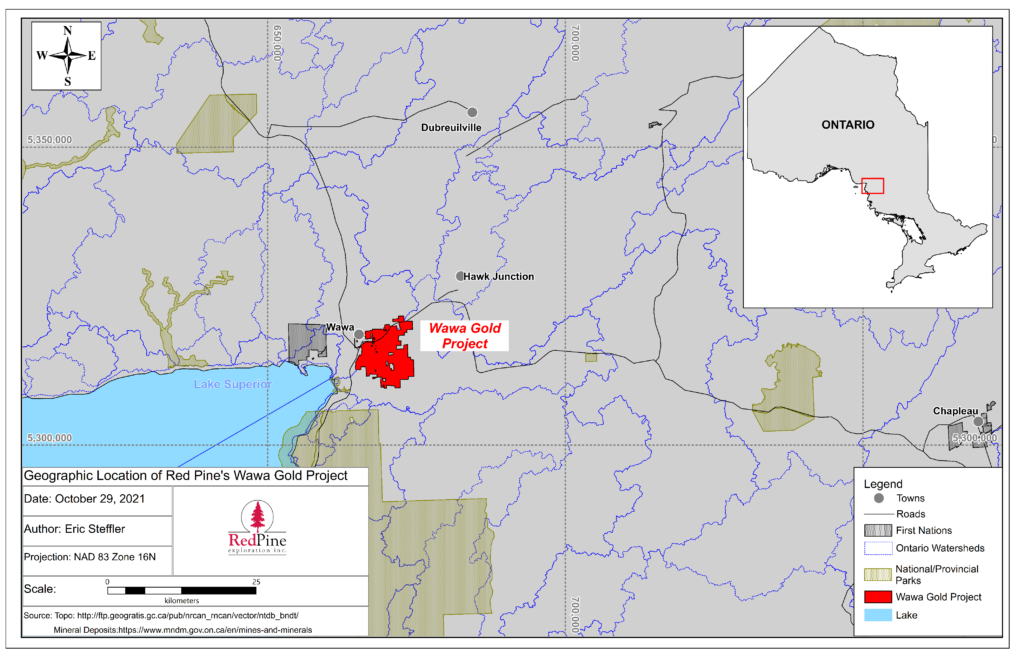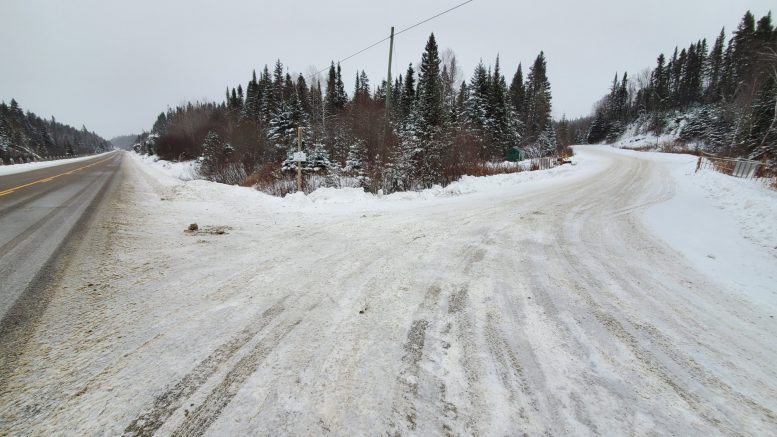Red Pine Exploration (TSXV: RPX, US-OTC: RDEXF) says its ex-CEO did more reputational damage than harm to the company’s Wawa gold project in northern Ontario when he allegedly altered hundreds of drill core assays used in a resource estimate.
Quentin Yarie, the CEO from July 2015 before stepping down on Feb. 21 this year in an unrelated move, according to the company, oversaw a data collection process where he was the sole recipient of emailed assay results from Activation Labs. Red Pine alleges Yarie changed 532 assays out of 98,000 before forwarding them to staff for use in project modelling its 2019 resource update and marketing.
“Look, in the end, it could have been a lot worse in terms of timing and the impact,” incoming CEO Michael Michaud said on a conference call on Wednesday. “We still believe in the potential of the asset. This is the reason why I joined Red Pine, this is reason why I’m here today and am looking forward to becoming the CEO.”
The scandal for the junior, which lost 60% of its share price when assay discrepancies were first revealed on May 1, may bring to mind the Bre-X Minerals fraud of the 1990s, but is on a much lower scale. Red Pine estimates the doctored assays aimed to marginally increase grade and could lower its Wawa project resource by as much as 12%. Bre-X involved blatant salting of core samples with incompatible gold nuggets.
“Certainly, though there was some manipulation of the assets, they were mostly embellishments,” Michaud said. “I’m not really terribly upset about the 10 or 15% because we’ll get that back easy.”
New resource
Red Pine suspended planned drilling and said it would trim costs at the site as it prepares to issue a new resource update with completely verified assays from as much as 70,000 metres in drilling since the last update. It didn’t give a potential completion date.
Shares in Red Pine rose about 20% to 11¢ apiece on Wednesday morning in Toronto, valuing the company at $21 million. They plunged to 8¢ apiece from 21¢ on May 1 when the company first described the assay inconsistencies in a release. They had traded in a range of 16¢ to 24¢ this year until May.
Red Pine referred the alleged fraud to the Ontario Securities Commission. It didn’t mention any legal action of its own against Yarie. He hasn’t replied to a request last week for comment from The Northern Miner.
The project lies beside the town of Wawa near the northeast shore of Lake Superior, about 220 km north of Sault Ste. Marie. The site hosts several historical mines that produced about 120,000 oz. gold.
Red Pine acquired the project in 2014. It produced a resource for the Surluga deposit in 2015 and later merged it with one on a historical mine area, Minto, in 2018.
New CEO
The company on April 22 announced the appointment of Michaud as CEO. He is to take office around July 19. The leadership change had nothing to do with the alleged assay manipulation, chairman and interim CEO Paul Martin (not the former Prime Minister) repeated on Wednesday.
“In all cases, the manipulation that occurred was to increase the grade,” Martin said on the call. “However, in virtually all cases, the manipulated grades were defendable at the time, based on among other things, the visual inspection of the core and assessment of the mineralogy, and one reason why the selective manipulations were not easily brought to light at the time.
“The changes were supported by the nuggety effect of the property as represented in the overwhelming number of unmanipulated assay results, often near where the selective manipulations were done.”
Red Pine staff first noticed a discrepancy between a certified assay result received from Actlabs and the corresponding assay result in the company’s database on April 29. An investigation determined the assay altering was done from the spring of 2015 until Jan. 30 this year.

Investigation
The company divided its investigations into two periods of assay results: 2014-2019 that resulted in the mineral resource estimates set out in the NI 43-101 technical report dated June 21, 2023 with an effective resource date of May 31, 2019.
The independent geologist in charge of the resource update, known in mining regulations as the qualified person, was Brian Thomas of Sudbury-based Golder Associates, now part of Montreal-headquartered WSP. Thomas declined to comment when reached this week by The Northern Miner. He referred questions to his WSP manager, Anas Tuijar, who didn’t return a phone message.
A second period covered 2019 to the present, during which assay results were disclosed through news releases.
For the first period, Red Pine determined that the inconsistencies mean a reduction in inferred resources for Wawa’s Surlaga and Minto deposits.
It estimated the Surluga area will lose an estimated 39,500 to 54,000 oz. (between 205,000 and 240,000 tonnes grading, on average, 6 to 7 grams gold per tonne) from inferred resources. That compares with the previous estimate of 2.4 million tonnes grading 5.22 grams gold per tonne. The indicated resource of 1.2 million tonnes grading 5.31 grams gold is not expected to change.
The Minto deposit loses 8,000 to 12,000 indicated oz. (between 30,000 and 40,000 tonnes grading 8.5 to 9.5 grams gold), and 16,000 to 20,000 inferred ounces (75,000 to 85,000 tonnes grading 6.5 to 7.5 grams gold). It was previously reported to hold 105,000 indicated tonnes grading 7.5 grams gold per tonne and 354,000 inferred tonnes grading 6.6 grams gold.


Sad day and unexpected by the shareholders I am sure. The picture is bright, and a new team of professional mining people will put all back on track for a successful journey to bear out the beliefs of many of the people who worked hard prior to the RPX entry into the deal from Citadel Gold Mines to RED PINE John Sadowski PROSPECIOR